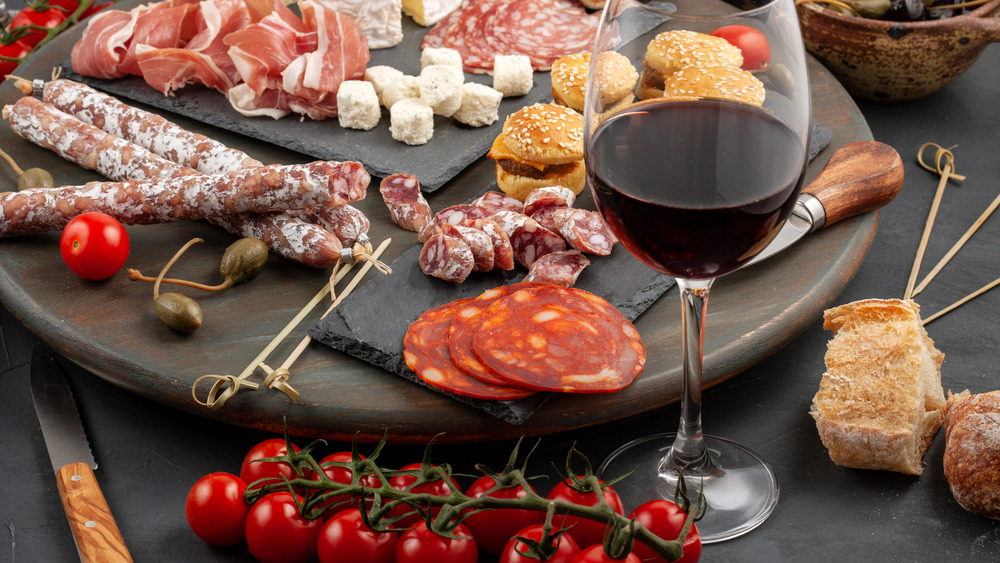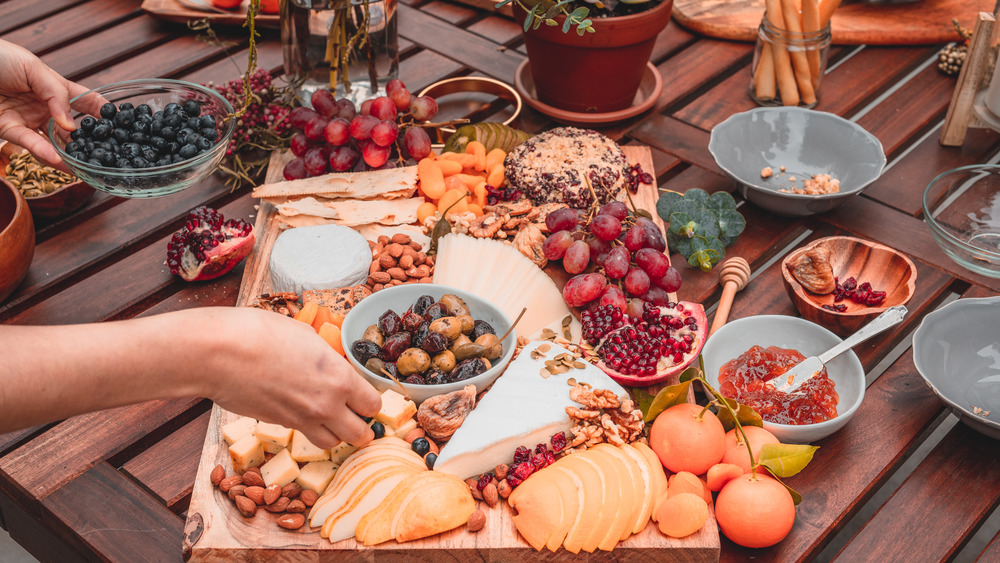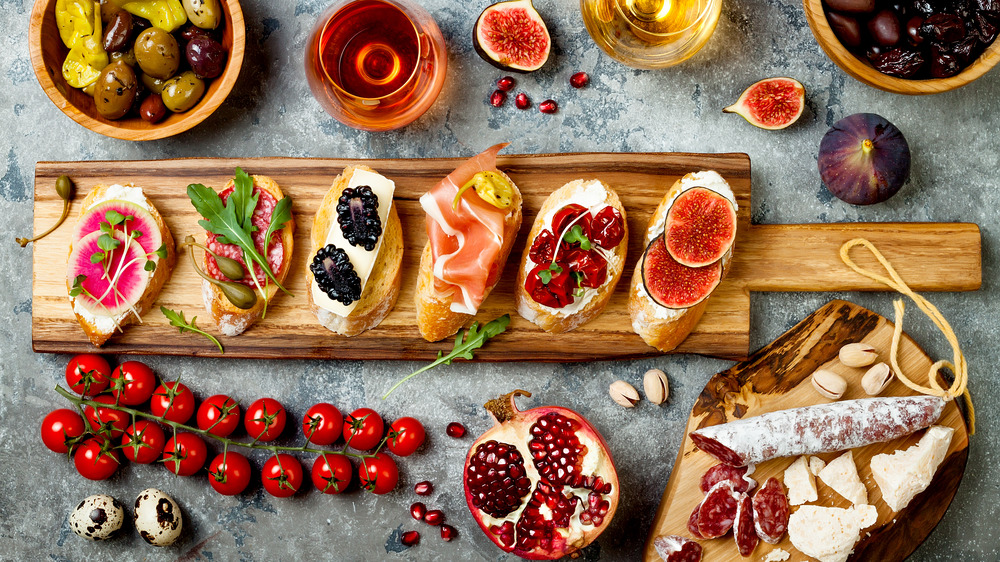Common Mistakes You're Making With Your Charcuterie Board
The New York Times may be on about charcuterie wreaths, but we're still busy perfecting the board. A true charcuterie board is not just any old cheese that you find in your fridge combined with leftover pieces of salamis and hams: real charcuterie is a work of art. It's a magnificent medley of vibrant colors, exciting textures, and delightful flavors that's meant, like all good meals are, for sharing. And while 24 actress Mary Lynn Rajskub might be right when she tweets that "charcuterie boards are super easy to make," they are also deceptively easy to mess up.
Mashed talked to Eataly Las Vegas Executive Chef Matthew Chacho, who laid down eight charcuterie board commandments so that your charcuterie afternoons will never flop again. The first mistake you might be making? Serving up too much or too little. Base your charcuterie buys on the number of guests you're expecting to host. "As a general rule, serve two ounces of charcuterie per person," says Chacho.
The second error you should avoid making when buying for your board is to purchase too much of one thing. "Vary textures on the board," Chacho advised Mashed, "Not only is it pleasing to the eye, but also the palate. Combine hard salamis with thinly sliced meats, and offer Mostarda, jams or honey." Those are the basics. Are you ready for the nitty-gritty of charcuterie making?
What your charcuterie board should never go without
If you only plan on offering up one to two kinds of cheese, you've already failed. "A well-rounded board offers three or four cheeses, in a variety of textures," admonishes Chacho. "Think hard and creamy." At Eataly Las Vegas, for example, you'll often find the following pairings: "Parmigiano Reggiano, Gorgonzola Dolce, Taleggio and Ricotta for the cheeses and Prosciutto di Parma, Prosciutto San Daniele, Speck and Coppa for the cured meats." That's the third commandment of charcuterie making. What's the fourth? If you've limited yourself to only offering up meats and cheeses, you haven't gone far enough. "Include something fresh to balance out flavors: figs, pomegranate seeds, pears, and grapes work well," Chacho told Mashed.
Fifth, "Don't forget the wine!" Eataly Las Vegas's executive chef exclaims. Chacho recommends that you "choose a ripe wine with some acidity to cut through the fattiness of the meat and cheeses like Barbera or Barbaresco." Alternatively, says the chef, "go for a nice Prosecco to clean up your palate between a bite and the other." Sixth, a good charcuterie board hungers after decent bread. "Sliced sourdough bread and crostini's are a great choice for salty meats and cheeses," Chacho advises. (We'll look the other way if you include a nice French baguette.)
Mistakes you might be making when putting your charcuterie board together
The last two commandments of charcuterie making have nothing to do with ingredients, and everything to do with prep. You never, and Chacho means never, should begin prep without consulting with your guests first. "Confirm if guests have any allergies," Chacho warned. "Nothing is worse than using a tree nut board (like walnut) only to find out a guest is allergic."
Finally, last on the list of charcuterie commandments is: use the right serving dishes. In other words, don't make the mistake of mixing condiments that shouldn't be mixed. "Soft condiments and olives that might bleed into to other items on the board," deserve their own small dishes, Chacho says.
That's it! You're off to the races. We recommend you take a couple of stabs at a traditional layout before advancing to, say, Misguided's pancake charcuterie board, which looks to include mimosas and healthy doses of whipped cream, fresh berries, and perfectly fried-up bacon. That's hands-down, next-level inspiration, which should only be attempted by a true master.


